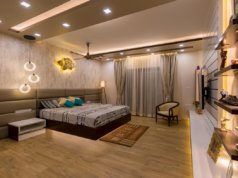 Sanjay Gupta,
Sanjay Gupta,
Executive Chairman
Metro-Link Express for Gandhinagar and Ahmedabad
Metro-Link Express for Gandhinagar & Ahmedabad (MEGA) Company Ltd is a special purpose vehicle (SPV) incorporated by the Government of Gujarat to implement Metro Rail Project. Sanjay Gupta, Executive Chairman – Metro-Link Express for Gandhinagar and Ahmedabad (MEGA) spoke to Sandeep Menezes about the highlights of the project.
What is the main objective of MEGA project?
Any metro rail targets two segments—areas which are already developed—here it provides a economical mass transport to the public and ensures reduction of private vehicles on the roads, thereby reducing fuel consumption, easing congestions etc and secondly, in those areas where development has not taken place, implementation of urban policies along the corridor in line with the Metro rail would ensure dense development happening due to the fast and economical transportation that it would provide.
What is the current status of Gandhinagar & Ahmedabad Metrolink project?
Government approval (for the project) has been obtained. Preliminary survey such as Topographical survey, soil investigation survey and detection of underground utility has been completed. Traffic demand assessment on the entire network has been completed. Monopile (Bilateral direction and vertical direction) test for finalising load for substructure has been conducted. Preliminary design for civil (substructure/superstructure), engineering alignment design, preliminary train operation plan, power load calculation etc. have been completed. Detailed design of depot and protecting structure also has been completed. Twelve EOI’s of all major activities have been completed. International companies have shown interest in the project and four RFP’s have already been floated.
Tell us about the financial closure and expected project completion timeline?
Funding will be primarily through debt and equity wherein State Government’s share will be to the extent of 40-45 per cent. The equity funding will be facilitated through State Government and property development, while some of Gujarat PSUs may also contribute to equity. Till date Rs.500 crore have been sanctioned for FY 2012-13. An amount of 15,000 crore project expenditure has been approved by the Government of Gujarat. MEGA has received Rs.550 crore till date. The first phase will be completed in 2015, second in 2018 and third phase in 2021.
How different is your Metro link project from those which are coming up in other parts of the country?
Uniqueness of MEGA Stations
- Planning – Planned elevation on road junction and median of the road for traffic comfort and easy accessibility.
- Architectural – Unique and compact architectural model blended with local area harmony with all services provided at platform and mezzanine level.
- Structure Design – Combination of Pre-cast and Cast- in-situ concrete structure with PEB lightweight roof structure and use of green siforex blocks.
- Elevation – Elevation gives iconic view of station similar to world class Metro stations. Interior & Exterior – World class interior and exterior concept have been adopted.
- Cost Effective – Zero land acquisition and minimum built up area compared to other metro projects enhance the cost effectiveness of the project.
- Technology – Advanced construction technology has been used.
- Time – Less built up area will help to finish the station within short period of time. There will also be time saving due to Zero land acquisition and advance construction methodology.
- Safety – Entry and exit from all sides, adequate circulation area, advanced mist fire fighting system and passengers and luggage screening at street level ensures safety at all levels.
Communication Based Train Control (CBTC):The MEGA shall adopt CBTC technology for the project. The system shall be entirely automatic using Unmanned Train Operation (UTO) when fully complete. The CBTC system will employ Radio-Based ‘moving block’ principles rather than the ‘traditional’ fixed block system and shall include “distance-to-go” functionality, thereby maintaining operation flexibility should the system revert to manual control. This system is proven in operation and is completely capable of satisfying the operational requirements and expectations of the project.
Platform Screen Doors (PSD): The PSD will utilise half-height screens at elevated stations and full-height screens at underground stations. These screens provide a safety barrier for the travelling public and will provide significant cost savings in underground stations should air condition or heating systems be implemented. The PSD’s are fully integrated with the train doors.
Use of Monopile Foundation for Metro Rail Viaduct Structure: As a result, area required for construction will be considerably less as compared to multi-pile system. Further, construction time and cost will be reduced considerably as only one pile is required to be constructed.
What are the main challenges faced while constructing metro links in highly congested urban areas?
The major challenges being faced are the problem of handling traffic at the construction areas and secondly the disposal of excavated materials in the areas where tunnelling is required to be done which needed proper planning and execution.
How do you ensure that Metrolink is economically viable while providing services at affordable rates?
Project’s viability needs to be looked at from two angles
- overall viability: viability for the country and the state/city, in terms of economic impact due to decongestion of roads, less expenditure on fuel due to the public resorting to use of the metro more than their own vehicles, thereby saving precious foreign exchange for the country
- operational viability: metro projects can attain operational viability only after five years approximately. Till it breaks even, the viability gap funding would be done by the Central Government through debt and equity.











